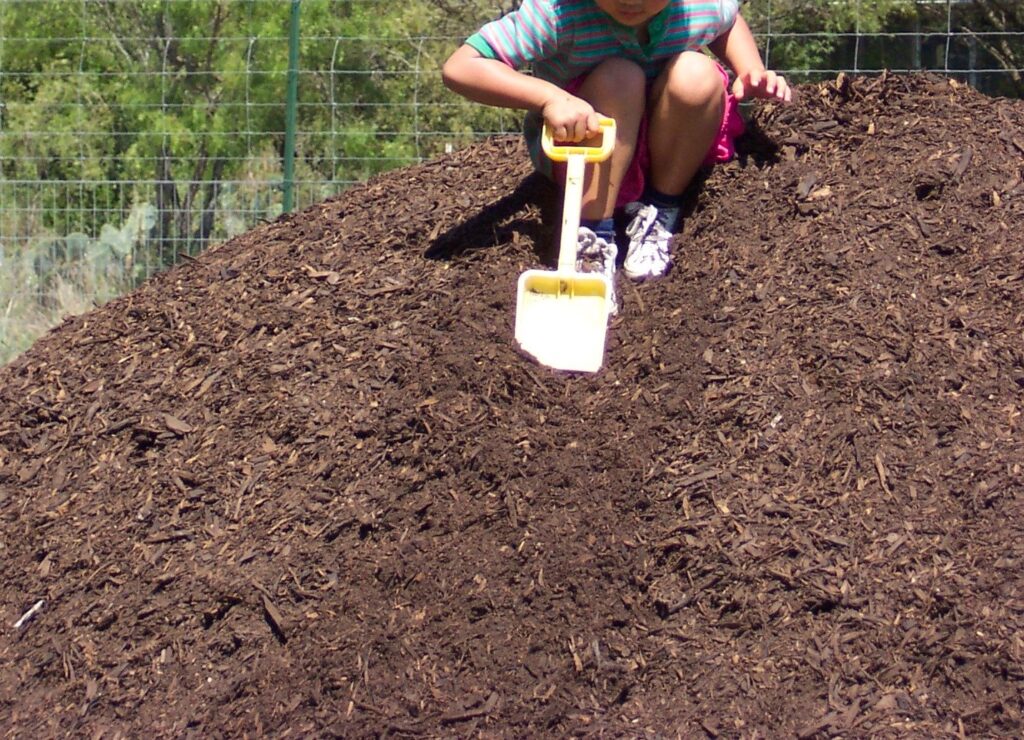Want to start an organic garden? It may be easier than you think. The first question people ask me about organic gardening is what do you do about the bugs? The answer is prevention!
Organic gardening creates healthy plants which are resistant to insects (in other words, bugs won’t bug you!) Healthy plants not only resist bugs, they also resist other problems such as fungal diseases, viruses or bacterial diseases. It is similar to how you get sick when you are run down or under stress. Normally, you have those bacteria or viruses in your body. It’s only when you are stressed that you succumb to the illness. So, your most important goal in your organic garden is to create the healthiest plants possible. To create healthy plants, you need to feed the soil so that the soil can feed your plants. Below is Grammy’s guide to keeping your garden healthy.
Step 1: Take very good care of your soil, and it will take care of your plants.
That’s not just dirt out there! There is a whole universe of life just beneath the surface. Beneath the surface of the soil, there are millions of tiny microbes that can help your plants in many ways. You probably know that plants need nitrogen, phosphorus and potassium. They also need all kinds of minor elements in order to grow and produce flowers or fruits.
The microbes in the soil break up the minerals and other substances and make them available to the plants you are trying to grow. Without microbes, your plants are malnourished. Take care of those microbes so that they can take care of your plants.
Step 2: Avoid all bug killers and chemical plant fertilizers.
When I say avoid, I mean don’t ever use them! Keep in mind that 97% of all insects are beneficial. If you use pesticides to kill the 3% that are pesky, you also kill those beneficial insects that help keep those troublesome ones in check – and you kill the life in the soil. If the microbes have been killed, the soil becomes hard and doesn’t nourish the plants.

Step 3: The best ingredient to put in your garden is compost.
Buy a high quality compost from a reputable nursery or compost company. Compost is a living substance. It contains organic matter, which improves your soil, and also a full complement of microbes. It is better to use compost that comes from a freshly finished pile, rather than bags of compost because the storage process may kill the microbes. It is nearly impossible to use too much compost, but you only need about 1-3 inches spread over your garden area. Gently scratch the compost into the top couple of inches of your garden area. Tilling too deeply also kills the microbes so go easy on that.
Step 4: Plant your seeds or transplants into your newly improved garden soil.
As soon as your transplants are in or your seeds sprout, cover the soil with cardboard or newspaper and cover with some type of mulch. Bagged mulch from the nursery is great, but you can also use hay, leaves, or wood chips. Mulch is important for several reasons. Most importantly, here in Texas where drought is always looming, it conserves water. Secondly, it keeps the soil cooler, which helps the plant survive our hot Texas summers. Keeping the soil cooler also helps the microbes live. When the soil dries out, microbes die. Also, when the soil heats up, you lose nitrogen to the air.
Step 5: Match Plants to Your Environment
Healthy plants can also be stressed by many factors including temperature, the acidity/alkalinity of the soil, light and moisture. Choose plant varieties that are known to do well in your environment. Your nursery can help you find varieties that are adapted to the local climate and soil type.
Step 6: Match Sun and Shade to Plants
Almost all vegetables and most flowers require a lot of sunlight. Choose the site to start your organic garden where you get at least 8 hours of sunlight per day. If you do not have a sunny site, you will need to plant a shade garden and choose plants that love the shade. You probably will not be able to grow vegetables since almost all of them require lots of sun, but you may succeed with some herbs and flowers such as impatiens.
Step 7: Water your plants “just right.”
To start your organic garden, you need to water your plants enough to keep them from wilting. It is possible to water too much as well. Use the Goldilocks method: not too much, not too little, just right. Make sure you have good drainage so that your soil does not become waterlogged. Plants drown in waterlogged soil, and microbes die as well in too much water. Drip irrigation is the best way to add water to your garden. You can use a sophisticated system or a simple soaker hose. Drip irrigation keeps water off of your plants leaves, and it reduces evaporation.
There you have it! In seven easy steps, you have the start of your garden. In later blogs, more information will be explored to help with each of these steps. Happy gardening!